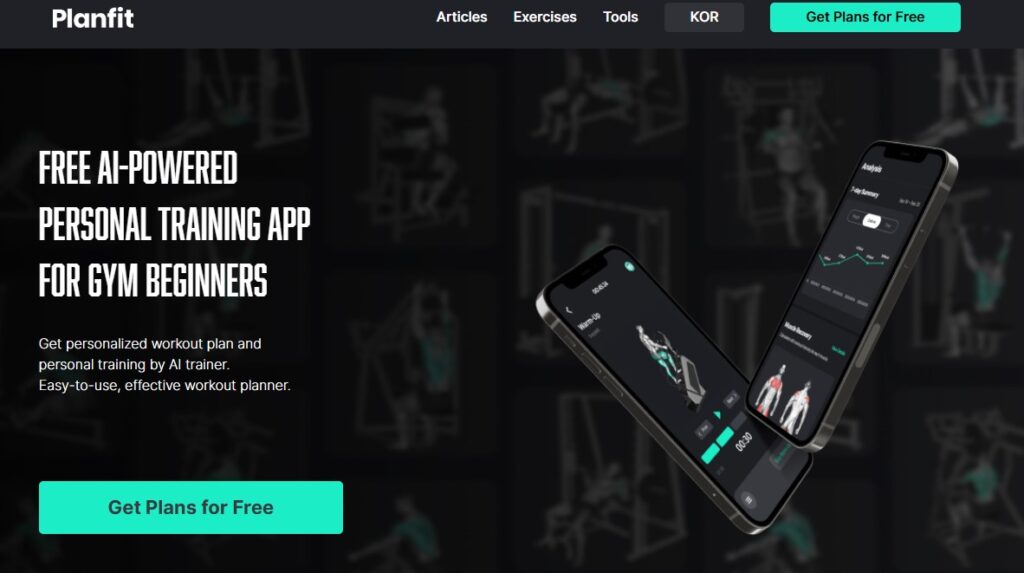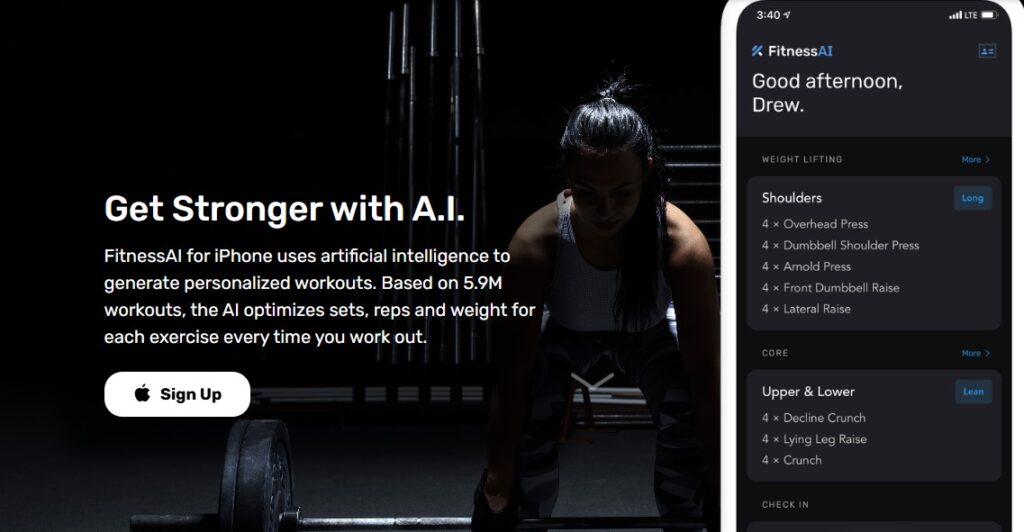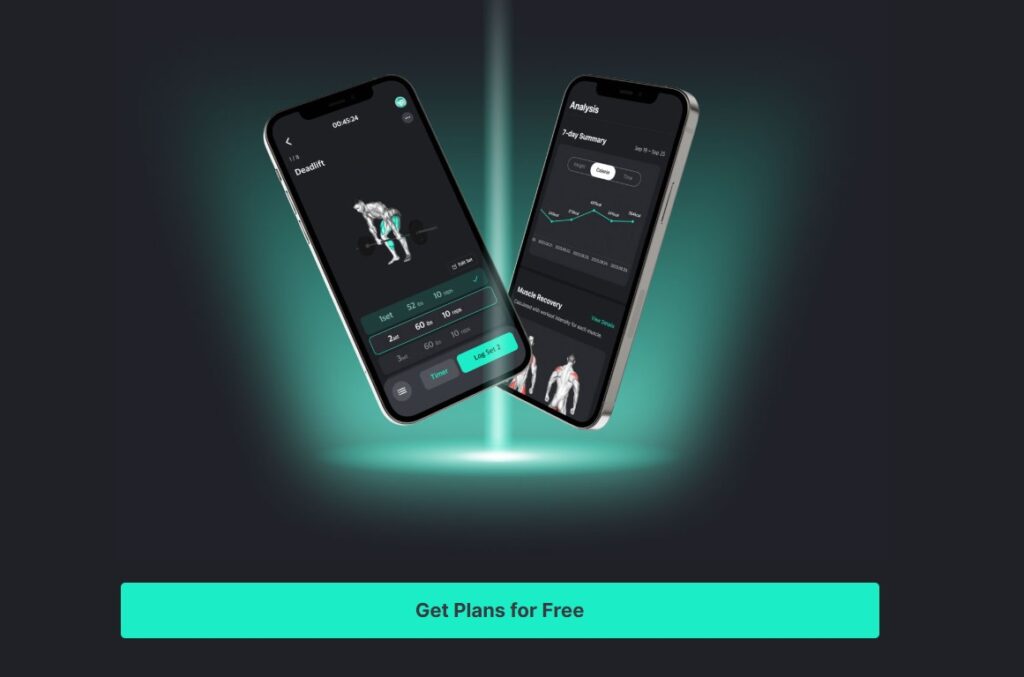FitnessAI vs planfit (2024): Which Platform Is Better?
Fitness apps aren’t just trendy—they’ve become powerful personal trainers in your pocket! In fact, according to recent data, over 50%…

Fitness apps aren’t just trendy—they’ve become powerful personal trainers in your pocket!
In fact, according to recent data, over 50% of gym-goers now rely on mobile tools to guide their workouts.
As fitness technology surges forward, two names stand out: FitnessAI vs planfit. If you’re looking for a platform to track gains, increase strength, and keep yourself motivated, you might wonder which one truly fits your lifestyle. Let’s explore their differences and discover which app can help you achieve your dream physique!
Core Features & Functionalities
When I first downloaded I realized how seriously these developers had worked to streamline the user experience. With an extensive exercise library, FitnessAI curates strength-building routines that feel like someone who gets both my strengths and my weak spots, all while offering detailed performance metrics to help me understand my progress made them.
FitnessAI’s biggest standout is how it uses an adaptive training algorithm to adjust my workout tracking based on real-time input. For instance, if I’m feeling wiped out after a series of deadlifts, it might dial back the next set or suggest a different combination of bodyweight exercises and accessory moves. On the flip side, if it sees I’m breezing through bench presses, it’ll throw in some extra intensity to ensure I’m edging toward my muscle growth strategies rather than coasting.

Then there’s planfit, a platform that takes personalization even deeper by integrating health and wellness apps for a truly holistic approach.
I like that its user-friendly interface is compatible with both iOS and Android, making it easier to stick to my routine no matter what device I’m on. Plus, there are plenty of workout customization features—like adjusting the training frequency or mixing in some high-intensity interval training (HIIT) to shake up my schedule—ensuring I’m never bored or stuck in a plateau.
Personalized Workout Programs – FitnessAI vs planfit
I remember when I tried to get serious about reaching my fitness milestones, and no matter what I did, I always seemed to hit a wall. That’s where both FitnessAI and planfit stood out: their personalized training plans felt like I’d hired a top-tier trainer without the hefty price tag. FitnessAI analyzes performance-based adaptations over time, gradually shifting the balance of cardio routines and strength sessions, while also factoring in recovery guidance, so you don’t burn out after week one.

Over in planfit’s world, personalization is its bread and butter. Within a few sessions, it offered goal-oriented workouts that made my regimen feel tailor-made for my unique needs. It doesn’t just give me a random gym companion app that spits out generic sets—it continually provides real-time feedback, tweaking my routines to emphasize functional training exercises or improve my flexibility, depending on how I’m progressing.
What I particularly love is how both apps handle detailed performance stats. FitnessAI’s analytics might show me that my deadlift form is lagging, then suggest form correction cues and even rearrange my schedule so I can improve. At the same time, planfit uses advanced AI fitness coaching to learn which exercises I’m more likely to skip (hello, burpees), then swaps them out for something I find more engaging, making it much easier to reach my fitness goal setting benchmarks.
After trying both platforms, I’ve found their adaptive training algorithms and structured exercise sessions are like having a silent mentor pushing me forward. Whether I want to focus on bodyweight exercises, hypertrophy training, or a balanced split of cardio and strength, both FitnessAI and planfit adjust and evolve with each workout I log. In a world where so many fitness tools feel cookie-cutter, these apps stand out by offering a level of personalization that’s refreshingly human—even if it’s powered by AI.

In-App Guidance & Coaching Support
In the beginning, I wasn’t convinced that an app could truly feel like having a personal coach. But FitnessAI actually gave me plenty of step-by-step instruction and goal-oriented workouts, breaking down each exercise with video demonstrations that helped me catch subtle form mistakes I never even knew I had. It’s not perfect—sometimes I felt the suggestions were a bit rigid, but overall, I got more than enough guidance to keep me from messing up my form at the gym.
What’s cool is how FitnessAI integrates form correction cues, ensuring I’m not just going through the motions but actually getting the most out of each rep.
Meanwhile, planfit pushes the envelope by offering a blend of real-time feedback and AI fitness coaching designed to feel like an actual mentor who’s dialed into my strengths. If I’m struggling on a new move, planfit’s instructional workout videos and community support features can help me see how others do it and adapt my approach, plus the app throws in recovery guidance so I don’t burn out two weeks in.
The other day, I attempted a high-intensity interval training set after feeling a bit rundown. FitnessAI quickly suggested I back off a bit, while planfit nudged me to try a lower-impact cardio routine. Honestly, this kind of in-app intelligence made me trust their direction more, and over time, I’ve come to rely on these platforms almost like a gym buddy who’s always got my back.
Pricing & Subscription Models
Now, let’s talk about something we can’t ignore: cost. I remember feeling a tad nervous when I saw these premium fitness subscription prices. With FitnessAI, you often get free trial workouts to test the waters, and the monthly workout plans can be slightly cheaper if you commit to a longer period—like grabbing a yearly plan that drops the monthly cost a bit.
At the same time, planfit seems to offer a nice range of options, from monthly subscriptions to more flexible bundles. I liked that planfit didn’t push me to go all-in right away. For instance, I tried a month-to-month plan while I was still getting comfortable, and it didn’t break my bank. Plus, the structured exercise sessions and adaptive training algorithm made it feel like I was getting serious value for money.
If you’re more budget-conscious, it helps that both FitnessAI and planfit show transparent pricing, so you’re not hit with surprise fees. From free trials to lifetime subscription options, both apps provide flexibility. Whether you’re trying to build long-term habit-building strategies or just dipping your toes in digital training, you can adjust your plan to fit your wallet and your workout style.
User Experience & Engagement
My initial reaction to opening both apps was a mix of excitement and skepticism. FitnessAI welcomed me with a streamlined, user-friendly interface that made it simple to find my workouts, track progress, and check out performance metrics without fumbling around. At the same time, planfit’s interface felt just as intuitive, with slick navigation and a smooth design that never left me guessing where to tap next. Both apps seemed to anticipate my moves, providing nudges to keep pushing forward.
After a few weeks, I noticed that FitnessAI’s motivational tools helped me stick to my routine. It integrated leaderboards, social workout challenges, and community support features, which made me feel like I had a squad cheering me on—even if I was technically working out solo in my garage. Planfit, meanwhile, managed to create a culture of engagement by allowing users to share their personal milestones, get feedback, and compare progress, keeping the vibe supportive and fun.
From time to time, I’d get bored with my usual routine. Planfit responded by nudging me to try new functional training exercises or experiment with different training frequency adjustments. FitnessAI’s workout reminders and adaptive training algorithm kept me focused, making it almost impossible to lose momentum. Both apps seemed to understand that real-life fitness journeys aren’t just about sets and reps—they’re also about staying excited and consistent.
Making the Choice: FitnessAI or planfit?
Choosing the right app might feel as tough as hitting a new PR on the bench, but here’s the deal: both FitnessAI and planfit can help you reach those long-term fitness adherence goals if you trust their process. FitnessAI excels at using performance-based adaptations that focus heavily on strength building, making it a great fit for people who love structured exercise sessions and straightforward data. On the other hand, planfit goes all-in on customization, offering a holistic approach that not only tweaks your routines but also integrates your lifestyle, helping you shape a more balanced fitness path.
If you’re someone who thrives on community support features, leaderboards, and a tight-knit online crew, FitnessAI might give you that extra push. If you’re the type who craves a unique blend of cardio routines, flexibility work, and even bodyweight exercises, planfit’s adaptive training algorithm will have you covered. Ultimately, budget, personal preference, and the style of training you respond to best should guide your choice.
I’ve found value in trying both because each taught me something new about my fitness journey. Whichever one you pick, remember: the most important thing is to stick with it, learn from the guidance, and adapt as you grow stronger. Over time, you’ll see that this digital coaching can make a real difference in building a consistent, fulfilling workout habit.
Conclusion
After using both FitnessAI and planfit, I’ve seen the difference technology can bring to personal training. With their adaptive training algorithms, real-time feedback, and top-notch exercise libraries, these platforms helped me break out of boring old routines and embrace a more dynamic fitness lifestyle.
To me, the biggest takeaway is that neither FitnessAI nor planfit is a one-size-fits-all solution. I started off thinking that one would obviously dominate the other, but in truth, it depends on who you are and what you’re chasing.
Some folks want highly data-driven strength building sessions with plenty of performance metrics and real-time feedback—FitnessAI nails that. Others might be craving flexible workout scheduling, community support features, and more holistic, lifestyle integration, which is where planfit really shines.
It’s not just about the workout tracking either. The best part about experimenting with these apps is understanding yourself better. I’ve learned that the key to sticking with a plan (digital or otherwise) is trusting the process and giving yourself time to adapt.
